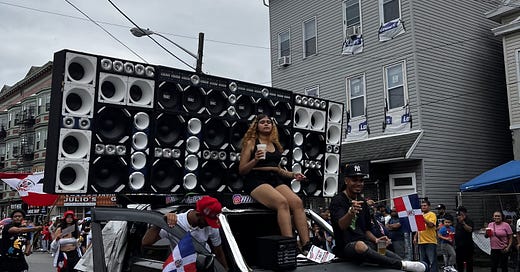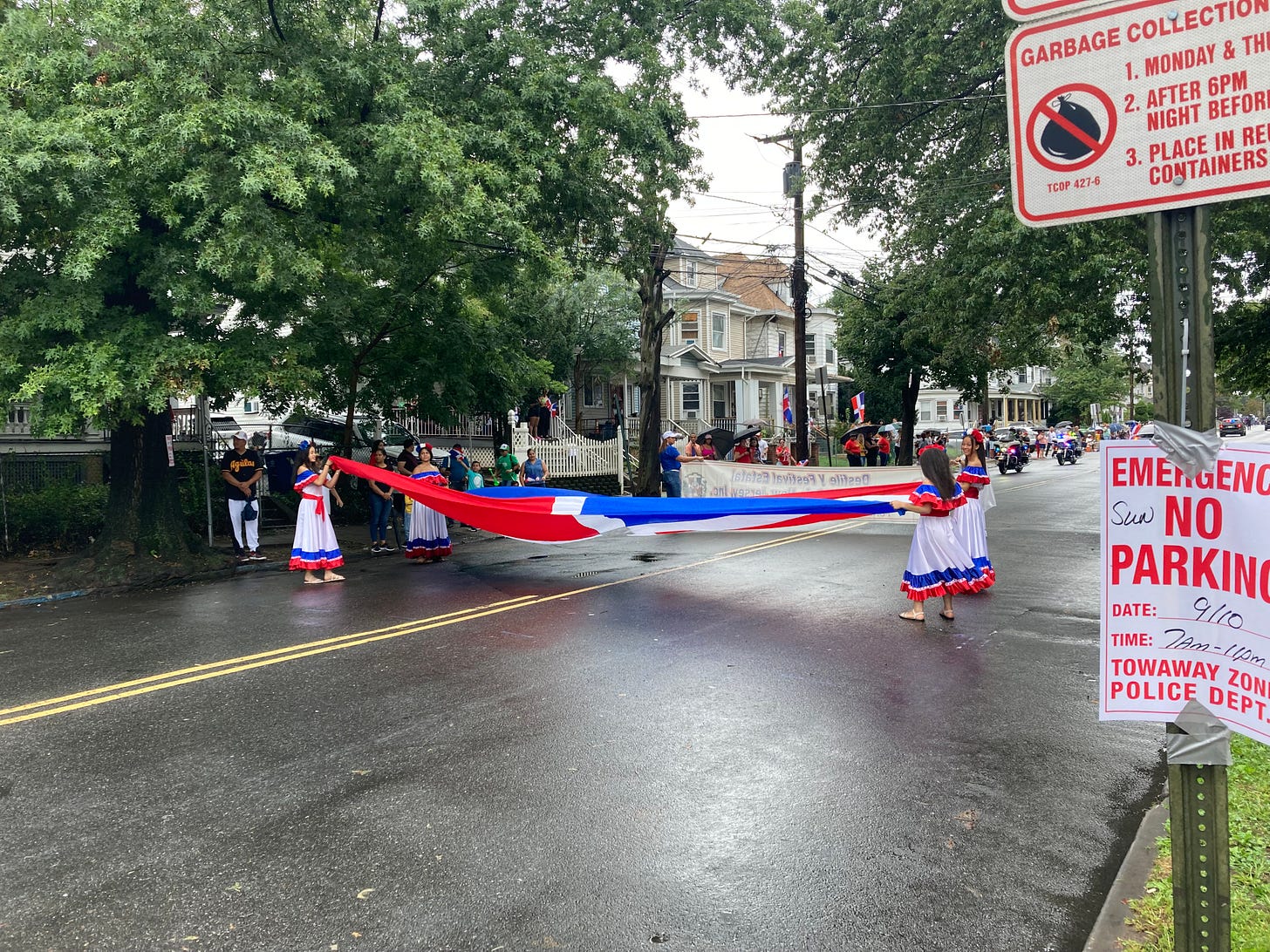Dembow detonates the shackles of White [Anglo] Supremacy
parades, ethnic barrios, and music of the diaspora
Walk in Philadelphia on a Sunday morning, and you will hear majestic Niagaras of sound pouring from the black churches. And who is doing the preaching in Ivy League humanities departments? Lily-livered, trash-talking foreign junk-bond dealers. Noses in the dictionary, they can't see the ancient art form of dance, the sacred poetry of the body, which has made the United States the envy of the world. Black teenagers, with brilliant virtuosity, push forward the frontiers of dance. Month by month on the street, they invent new movements that are recorded on music videos and beamed around the world, to the helpless amazement of European and Japanese admirers, who cannot imitate them.
I have a dream: in my dream, based on the diner episode in "The Blues Brothers," Aretha Franklin, in her fabulous black-lipstick "Jumpin' Jack Flash" outfit, leaps from her seat at Maxim's and, shouting "Think!," blasts Lacan, Derrida and Foucault like dishrags against the wall, then leads thousands of freed academic white slaves in a victory parade down the Champs-Elysees.
-Camille Paglia
In this country, for a dangerously long time, there have been two levels of experience. One, to put it cruelly, can be summed up in the images of Gary Cooper and Doris Day, two of the most grotesque appeals to innocence the world has ever seen. And the other, subterranean, indispensable and denied, can be summed up, let us say, in the tone and in the face of Ray Charles.
-James Baldwin
The streets were lined with throngs of people—young and old, of varying body types and skin tones—draped in red, white, and blue flags, hats, jerseys, and bracelets. Some sat in beach chairs, others sipped from frosted bottles of beer or took drags from miniature hookahs as they watched a variety of spectacles pass them by: floats with buxom women dancing along to the bouncing rhythms of live bands, trucks throwing out free salami, snake handlers and ghouls cracking whips while dressed in vibrant colors, cars with enormous speakers hoisted into the trunk as the bass boomed out to a 5 block radius. The pandemonium didn’t die down as the parade came to a close. Rather, it poured out into the streets as people started dancing, singing, drinking, and barbecuing on stoops and street corners.
Surely one wouldn’t expect to find such a scene at the Labor Day parade. That’s because this was at the Dominican parade in Paterson, New Jersey. Would you really think assimilated Americans would be capable of even conceiving such a scene?
This brand of boisterously joyful spontaneity was largely unknown in the genteel suburbs of my youth. As Baldwin once quipped, “where the people can sing, the poet can live.” A poet—a person who is fully alive, fully human…who is always set ablaze with passion and can’t manage to tame the restless yearning in his heart, mind, and soul—finds it challenging, to say the least, to live in the blandly unimaginative suburbs where one is not likely to come across spontaneous bursts of song and dance in the streets.





